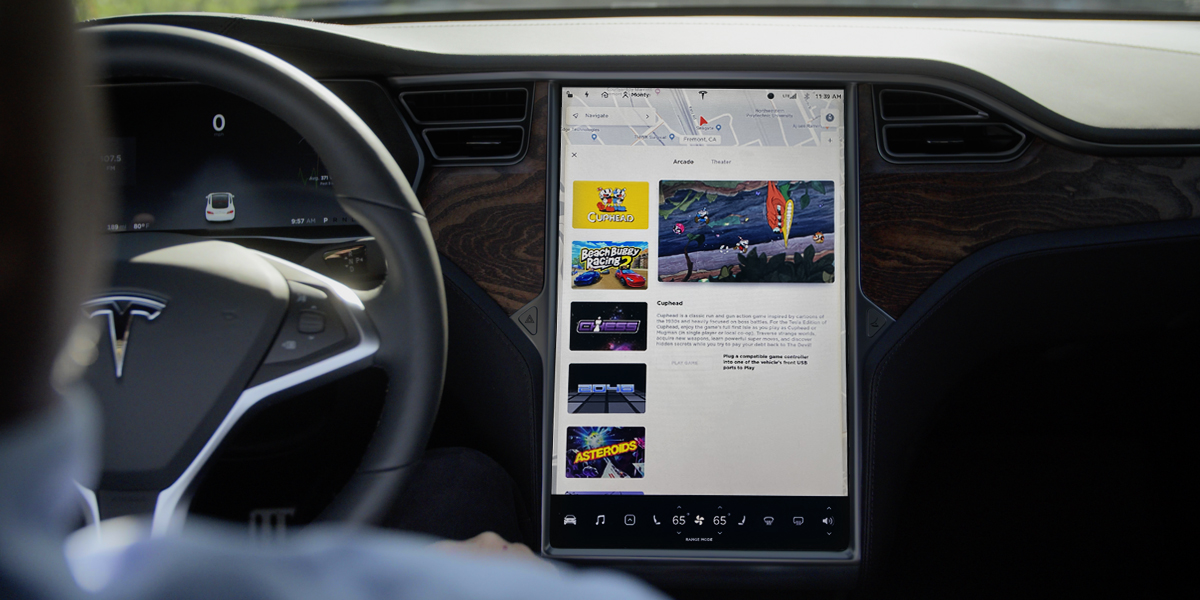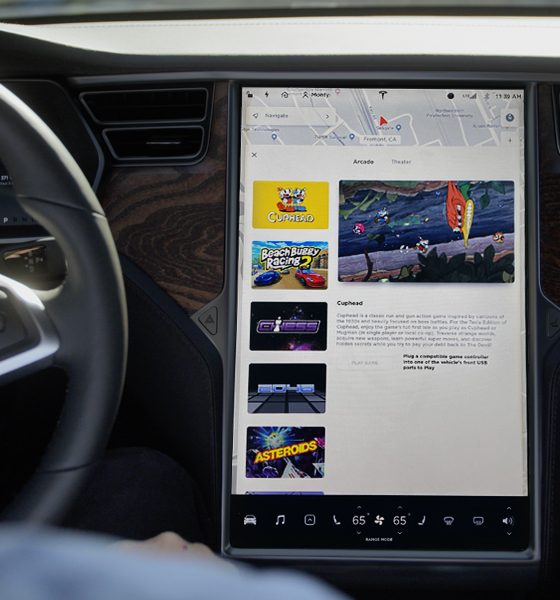

News
Tesla Model S and X resale value just got a massive boost
After a rather long wait, Tesla has announced that it will now begin offering MCU retrofit options for older vehicles built before the company rolled out its newer, faster infotainment unit. With this, Tesla has ensured that older Model S and X will retain, if not improve, their resale values, which are already quite impressive on their own right.
Tesla’s electric cars already boast good resale values, with a Forbes report noting that today, it is actually more practical to buy new Model S, Model X, and Model 3 instead of purchasing the electric vehicles second hand. This is because even older Teslas like the Model S 75D and the Model X 100D command a high price in the second hand market. Seemingly due to high demand, some Model 3 sold in the second hand market today are actually more expensive than a brand new car.
It is pertinent to note that Teslas evolve much faster than the average vehicle. As noted by CEO Elon Musk, Teslas are pretty unique in the way that they receive incremental upgrades as soon as the improvements are ready to roll out. Thus, while the actual updates to the Model S and X are subtle, the number of optimizations that the company rolled out to the flagship vehicles over the years is actually very generous.
Among the most notable of these upgrades came in the form of a new infotainment system for the Model S and X that features a faster and smoother user experience. The differences between the features of Tesla’s MCU1, which is equipped with an NVIDIA Tegra-3 chip, and the company’s MCU2, which is fitted with a more powerful x86_64 processor, are subtle. However, later features such as the Tesla Arcade and Tesla Theater were compatible only with the newer, faster units.
Elon Musk has been stating for some time that Tesla will be offering an infotainment system upgrade option for owners of vehicles that are still equipped with MCU1. Updates about the upgrade option were relatively far and between, until recently, when Tesla shared a blog post stating that MCU2 retrofits will be offered for $2,500 to interested buyers. Owners of older Model S and Model X who purchased Tesla’s Full Self-Driving suite are even given early access to the upgrade, together with a complimentary Hardware 3 retrofit.
Once equipped with Tesla’s MCU2, older vehicles will gain full access to the company’s most recent features. This essentially updates MCU1-equipped Model S and X to such a degree that they are almost on par with the company’s newest vehicles. A Tesla Model X 75D with Full Self-Driving and an MCU1, for example, can be upgraded to a vehicle with Tesla Theater and the latest FSD preview visuals for $2,500. These improvements, of course, raises the value of Tesla’s older vehicles.
In the second hand market, vehicles that command the best price are those in excellent condition and those that are equipped with an automaker’s latest technologies. For vehicles from legacy automakers, this usually means cars that are several years old are drastically lower in price than their brand new counterparts. Teslas also drop some of their value as they get older, but with the company’s MCU2 upgrade option, this process will likely take even longer.

News
Tesla starts showing how FSD will change lives in Europe
Local officials tested the system on narrow country roads and were impressed by FSD’s smooth, human-like driving, with some calling the service a game-changer for everyday life in areas that are far from urban centers.

Tesla has launched Europe’s first public shuttle service using Full Self-Driving (Supervised) in the rural Eifelkreis Bitburg-Prüm region of Germany, demonstrating how the technology can restore independence and mobility for people who struggle with limited transport options.
Local officials tested the system on narrow country roads and were impressed by FSD’s smooth, human-like driving, with some calling the service a game-changer for everyday life in areas that are far from urban centers.
Officials see real impact on rural residents
Arzfeld Mayor Johannes Kuhl and District Administrator Andreas Kruppert personally tested the Tesla shuttle service. This allowed them to see just how well FSD navigated winding lanes and rural roads confidently. Kruppert said, “Autonomous driving sounds like science fiction to many, but we simply see here that it works totally well in rural regions too.” Kuhl, for his part, also noted that FSD “feels like a very experienced driver.”
The pilot complements the area’s “Citizen Bus” program, which provides on-demand rides for elderly residents who can no longer drive themselves. Tesla Europe shared a video of a demonstration of the service, highlighting how FSD gives people their freedom back, even in places where public transport is not as prevalent.
What the Ministry for Economic Affairs and Transport says
Rhineland-Palatinate’s Minister Daniela Schmitt supported the project, praising the collaboration that made this “first of its kind in Europe” possible. As per the ministry, the rural rollout for the service shows FSD’s potential beyond major cities, and it delivers tangible benefits like grocery runs, doctor visits, and social connections for isolated residents.
“Reliable and flexible mobility is especially vital in rural areas. With the launch of a shuttle service using self-driving vehicles (FSD supervised) by Tesla in the Eifelkreis Bitburg-Prüm, an innovative pilot project is now getting underway that complements local community bus services. It is the first project of its kind in Europe.
“The result is a real gain for rural mobility: greater accessibility, more flexibility and tangible benefits for everyday life. A strong signal for innovation, cooperation and future-oriented mobility beyond urban centers,” the ministry wrote in a LinkedIn post.
News
Tesla China quietly posts Robotaxi-related job listing
Tesla China is currently seeking a Low Voltage Electrical Engineer to work on circuit board design for the company’s autonomous vehicles.

Tesla has posted a new job listing in Shanghai explicitly tied to its Robotaxi program, fueling speculation that the company is preparing to launch its dedicated autonomous ride-hailing service in China.
As noted in the listing, Tesla China is currently seeking a Low Voltage Electrical Engineer to work on circuit board design for the company’s autonomous vehicles.
Robotaxi-specific role
The listing, which was shared on social media platform X by industry watcher @tslaming, suggested that Tesla China is looking to fill the role urgently. The job listing itself specifically mentions that the person hired for the role will be working on the Low Voltage Hardware team, which would design the circuit boards that would serve as the nervous system of the Robotaxi.
Key tasks for the role, as indicated in the job listing, include collaboration with PCB layout, firmware, mechanical, program management, and validation teams, among other responsibilities. The role is based in Shanghai.
China Robotaxi launch
China represents a massive potential market for robotaxis, with its dense urban centers and supportive policies in select cities. Tesla has limited permission to roll out FSD in the country, though despite this, its vehicles have been hailed as among the best in the market when it comes to autonomous features. So far, at least, it appears that China supports Tesla’s FSD and Robotaxi rollout.
This was hinted at in November, when Tesla brought the Cybercab to the 8th China International Import Expo (CIIE) in Shanghai, marking the first time that the autonomous two-seater was brought to the Asia-Pacific region. The vehicle, despite not having a release date in China, received a significant amount of interest among the event’s attendees.
Elon Musk
Elon Musk and Tesla AI Director share insights after empty driver seat Robotaxi rides
The executives’ unoccupied tests hint at the rapid progress of Tesla’s unsupervised Robotaxi efforts.

Tesla CEO Elon Musk and AI Director Ashok Elluswamy celebrated Christmas Eve by sharing personal experiences with Robotaxi vehicles that had no safety monitor or occupant in the driver’s seat. Musk described the system’s “perfect driving” around Austin, while Elluswamy posted video from the back seat, calling it “an amazing experience.”
The executives’ unoccupied tests hint at the rapid progress of Tesla’s unsupervised Robotaxi efforts.
Elon and Ashok’s firsthand Robotaxi insights
Prior to Musk and the Tesla AI Director’s posts, sightings of unmanned Teslas navigating public roads were widely shared on social media. One such vehicle was spotted in Austin, Texas, which Elon Musk acknowleged by stating that “Testing is underway with no occupants in the car.”
Based on his Christmas Eve post, Musk seemed to have tested an unmanned Tesla himself. “A Tesla with no safety monitor in the car and me sitting in the passenger seat took me all around Austin on Sunday with perfect driving,” Musk wrote in his post.
Elluswamy responded with a 2-minute video showing himself in the rear of an unmanned Tesla. The video featured the vehicle’s empty front seats, as well as its smooth handling through real-world traffic. He captioned his video with the words, “It’s an amazing experience!”
Towards Unsupervised operations
During an xAI Hackathon earlier this month, Elon Musk mentioned that Tesla owed be removing Safety Monitors from its Robotaxis in Austin in just three weeks. “Unsupervised is pretty much solved at this point. So there will be Tesla Robotaxis operating in Austin with no one in them. Not even anyone in the passenger seat in about three weeks,” he said. Musk echoed similar estimates at the 2025 Annual Shareholder Meeting and the Q3 2025 earnings call.
Considering the insights that were posted Musk and Elluswamy, it does appear that Tesla is working hard towards operating its Robotaxis with no safety monitors. This is quite impressive considering that the service was launched just earlier this year.








